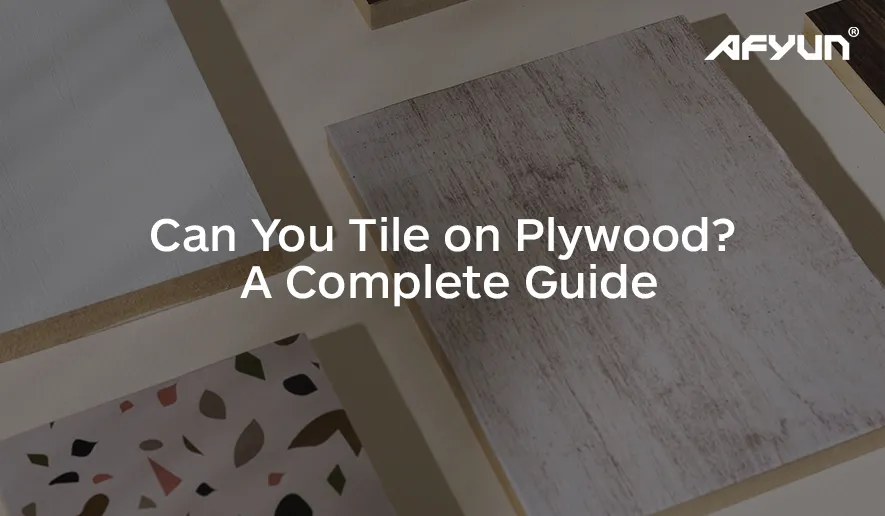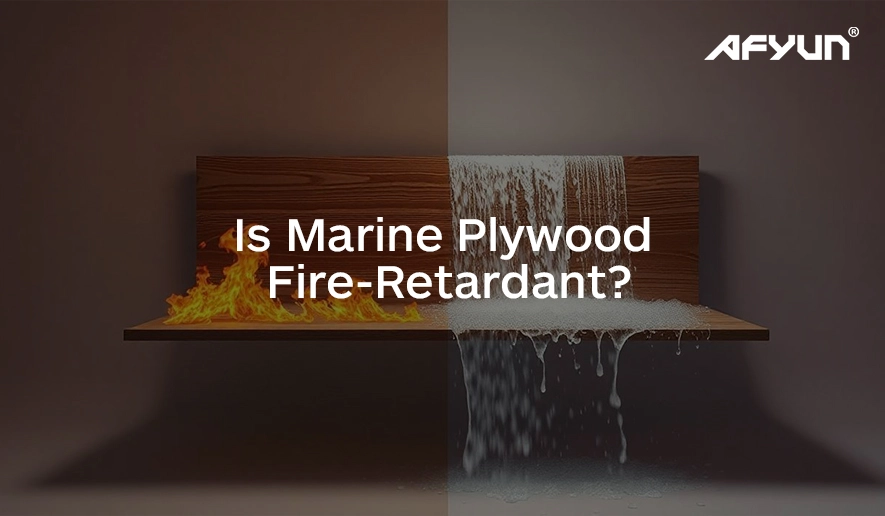While tiling, it is crucial to have a stable and secure base that won’t move, expand, or contract when you’re installing tile. Even the most expertly installed floor can be destroyed if the base is unstable.
Other types of flooring like ceramic, porcelain, and glass tile are too fragile to withstand even the slightest movement, unlike laminate or luxury vinyl tile which is more flexible and forgiving.
How Plywood Affects Tile Installation
Since plywood and tile are made of different materials—wood and clay—they expand and contract at different rates. Although plywood is quite dimensionally stable, it’s not stable enough for tiling on its own. Even concrete isn’t an ideal base for tile; it needs to be separated from the tile to prevent issues.
Installing tiles on plywood might seem like a challenge but with the right preparation and technique, it can be done effectively and easily.
So if you’re looking to tile a floor, here’s the proper step to successfully install tiles on a plywood surface.
1. Evaluate the Plywood Surface
- Check for stability: To prevent the tiles from cracking later you must ensure that the plywood is securely attached to the subfloor or wall studs so that it should be free of movement.
- Surface condition: Sand any rough spot to create a level surface to ensure that the plywood is smooth, clean, and free of any debris, dirt, or grease.
2. Choose the Right Plywood
- Exterior grade plywood: Use exterior-grade or moisture-resistant plywood for the best result because they are the type of plywood that can withstand the moisture from tile adhesive and grout, reducing the risk of warping or rotting.
- Thickness matters: To avoid flexing and to support the weight of the tiles, the plywood should be at least 3/4 inch thick.
3. Prepare the Plywood Surface
- Seal the plywood: To prevent moisture from the thin-set or adhesive from penetrating the wood, which could cause warping, applying a waterproof sealer or primer designed for plywood is necessary.
- Install a backer board: Adding a cement backer board over the plywood is optional but it is recommended as it provides a more stable and water-resistant surface. Attach the backer board using thin-set and screws, making sure the seams are taped and smoothed out.
4. Apply the Thin-set
- Mix the thin-set: Manufacturer’s instructions must be strictly followed to mix the thin-set mortar and to ensure that it has a consistency like peanut butter.
- Spread the thin-set: Spread a thin layer of thin-set over a small section of plywood or backer board using a notched trowel. To make sure that the tiles adhere better, hold the trowel at a 45-degree angle so that ridges can be created.
5. Lay the Tiles
- Position the tiles: Depending on your layout plan, start from either the centre or the corner. Use a spacer to maintain the gap and then press each tile firmly into the thin-set.
- Check alignment: To ensure that the tiles are aligned and level, use a level and a straight edge. Don’t forget to adjust as needed before the thin-set starts to set.
6. Let the Thin-set Settle
Allow the thin-set to settle for at least 24 hours before proceeding. This ensures the tiles are firmly set and won’t move during grouting.
7. Apply Grout
- Mix the grout: Mix the grout according to the instructions on the package. Using a rubber float, apply grout, pressing it into the gaps between the tiles.
- Clean excess grout: Wipe off excess grout from the surface using a damp sponge. To avoid leaving grout haze on the tile, rinse the sponge frequently.
- Let the grout settle: Allow the grout to settle for 24-48 hours. ( It usually depends upon recommendation)
- Seal the grout: Apply a grout seal if applicable, to protect against stains and moisture. This is especially important in areas prone to water exposure, such as bathrooms and kitchens.
8. Final Inspection
Once everything is dry, check for any imperfections. If necessary, touch up any grout lines or replace tiles that may not have been set correctly.
Final Words
When tiling on plywood, the quality of your plywood is crucial for a successful and long-lasting result. Consider opting for high-quality, structurally sound plywood like Afyun plywood to ensure a stable and reliable base.
By choosing the right plywood, you can avoid common issues such as warping or cracking, leading to a professional and durable tile installation. Don’t compromise on the foundation—start with the best for a flawless finish.
If you need more guidance or have any questions, feel free to contact us. We’re here to help you make the best choice for your project.


